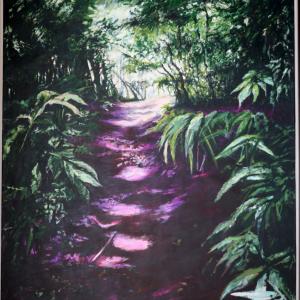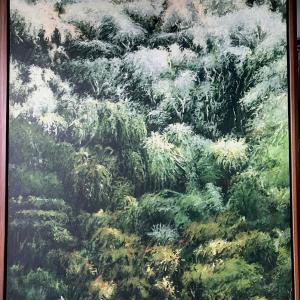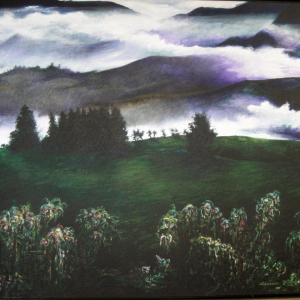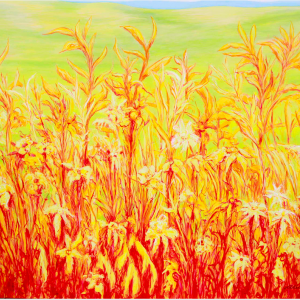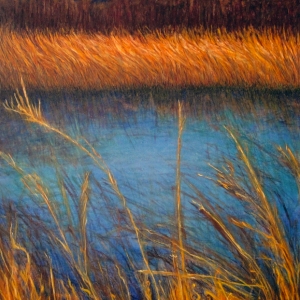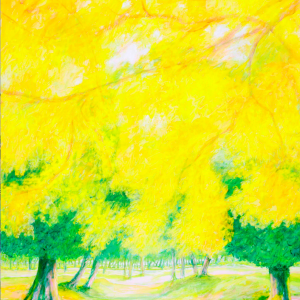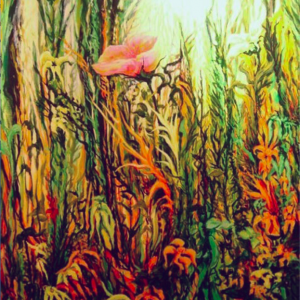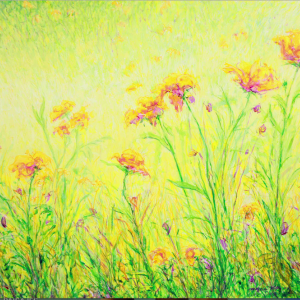critics
PRADA GALLERY
Washington D.C.
Alicia Viteri
Painter and engraver
A complex work made in thirty-five years of intense activity characterized by the search of her own expression, renewed in multiple phases always as the inner reflex of the artist.
In Alicia Viteri it is worth noting the impact caused by her energy and academic education on her return in 1972 when she brings to Panama her dedication to engraving work. The University of Panama's atelier and Panarte's graphics shop are transformed, because of her initiative, in centers of graphics activities, enriching the Panamanian scenery until then engaged exclusively in painting.
Vivifying as well, for the atmosphere of that time are,in a first phase of her graphics production, her works in which insects scandalized a vast public. Although for some, because it is a door to her inner world, open a vision of art understood as transpositions of humane perceptions in irreverent motifs. Insects "exorcizing" the anxieties, traumas of the artist but by the same token, for the strength of her strokes synthesizing a criticism to "prejudicial society and conventionalism".
In 1977 she becomes involved in a novel motif, the hands, anticipating a phase more somber of her works produced now in Quito. A series of plumelets and engraving works introduces a series of characters, in solemn poses, with furs and hats, always in a satyrical and painful vision of Man, in his social appearance, empty of humane content. Followed by the dramatic series "The mummies" in which modified layers and successively destroyed of a self-portrait result in deformed figures intensively suggestive, in "an inner search of the human truth".
After a brief period in Spain, Alicia Viteri prepares - during three years - "Pictorial Spaces" (1984), her monumental representation of the human farce. Two friezes of human figures - "Funerals" and "Carnavals" - surrounded by paintings and a set of reflecting lights, brightens this installation, pioneer in the Panamanian scenery. In the first, idle characters, "decadents" of the bourgeoisie and, in the second, "vital" figures of Caribbean accents achieving - in a contrast between the rigidity of vertical axes of "Funerals" and the dynamism of curves and colors of "Carnivals" - a faithful and heartbreaking image of the social reality.
In 1991 Alicia Viteri carries the human study to caricatures in a series dedicated to the court of the "Prosperous Prince". Of testimonial value arisen from the crises of freedom lived in Panama, is a gallery of grotesque figures with euphuistic details placing the portrait of a materialistic social world.
After a long pause, her last phase, now in acrylics, is an optimistic view of nature, in splendor of vegetation and of green tonalities.
Today, Alicia Viteri works on digitalized photography and in complex computing processes preparing a book for a next edition which makes us meditate on the surprising means of expression attained by this artist.
Angela de Picardi
,For many years Alicia Viteri was mainly an artist of the human figure and a graphic artist.
With a large collection of drawings ( in dry and fluid medium) and engravins (engravings in Metal, litographys and serigraphys). If you remember the evolution of her themes, it is not difficult to summarize the fransformation of her figures, from the insects at the end of the Sixties that soon started to assume human movements – to the series of the Prosperous Prince, from 188-1991, in which this character and the members of his court were as repulsives as the creatures of her first engravings and drawings- At the end of the eighties The artist told Marta Rodríguez in an interview: “ My work is nourished definitely by the human condition. My landscape is the people , it is the landscape y have always seen and I never wanted to see another one “.
After a long, compulsory silence and a reinitiation full of difficulties, in which we could begin to see references to landscapes, Alicia Viteri has reintegrated fully to her artistic work and now paint in acrylics the themes related to nature, real landscapes, because she cannot find humsn figures, and more accurately, she cannot paint them. It would seem that now thr painter only could - and only would – paint beaches, prairies, paths, ponds, trees, trunks, follage, flowers, a few animals.
Landscape has been one on paintigs’ greatest themes. If at the beginning the artist’ main intention was the representation of nature with its many diverse shapes, with time landscapes were used to convey feelings of fear, in view of its enormity and the unknown, and to express ideas about the divine, or it became a great receptacle of states of mind. In other words, if at the beginning the landscape was objective, further on it became mainly subjective. Even though realistic landscapes have not been lacking in the twentieth century, the best paintings of the theme were by the expressionist or at least the imaginists, in whom the artist’point of viewprewails, as well as his emotions, and above all, his imagination.
Van Gogh and Gauguin were the predecesors of these landscapes, in which you not only recognice places in France or Tahití, but mainly in which you grasp the vehement feeling of the Dutchman and the instrospective virtues of the Frenchman. With a brief interruption, Alicia Viteri has liver for the last 25 years in the city of Panama, a city in which it is easy to watch the sea in many places. For many years the artist has spent the weekends in Riomar. The way from the capital is not toolong , but is very pleasant: you see beautiful landscapes, you can tell the exuberance of nature. The beaches of the Pacific are proteic, full of contrasting accidents. And the vegetation is abundante and varied. If Alicia Viteri is painting landscapes, its understandable. Profound, very sensitive and a great observer, the artist lives surrounded by landscape. However, her acrylic do not correspond to what accompanies her permanenty what she observes. Even though sometimes she tells of a photographic reference, Alicia Viteri paints mainly landscapes of her invention, in which arise a memory of the surroundings of Pasto, her native city in Colombia, or in which may appear a corner of Giverny observed in a video about Claude Monet, etc.
Something important in this series of landscapes, dated in the last three years, is there are no two works the same, each one has different motives and compositions and different points of view: from the top, very close, at level, inside in the middle of the wilderness. What calls your attention in them are the constrast of light and shadows – made with dark greens, no with blacks –, the representation of of reflections in the water and winds in the middle of high grass, the differences in pastes and brush strokes and the variety of color, In which purple is the most prevalent. Definitively , very special landscapes, in which apart from the excelent style, what stands out is the intensity of feelings and the passion for life.
GERMAN RUBIANO CABALERO
Historian and Art Critic
